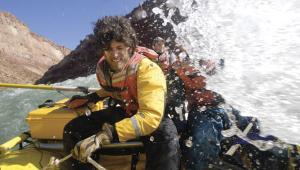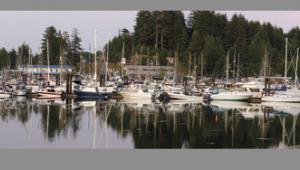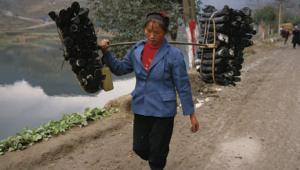Locations; Rust And Swollen Film; Avoiding Destruction In The Rain Forest
The trip began poorly. The remote, unmaintained road dropping from the Andes
to the Amazon was a mess. All day we had struggled to prevent the bus from becoming
fossilized in the muck. Hours of labor, and we were covered in a thick layer
of red, Amazonian mud. After dark, it started to rain. Huge drops pounded our
hair, arms, and soiled clothes. Someone pulled out soap, another shampoo, and
the storm washed us clean. Then as quickly as it started, the rain stopped and
stars appeared overhead. I had arrived. The rain forest.
As a biologist I've learned to write my notes on rain-proof paper, use
waterproof binoculars, and do my best to ignore it. As a photographer, a few
more precautions are necessary. Our camera bags may be "water-resistant"
but with few exceptions are not adequate to protect our equipment from the moisture
extremes found in the tropics. This perhaps is the reason we see so few images
of rain forests that reflect the true nature of the region...rain.
The forest canopy gives a few seconds of protection; time to get your camera
back in its bag, but only just. If you have no rain gear or umbrella you will
be drenched. Coping with these downpours is fairly simple: seek cover. If you
do happen to be caught out in a storm, pack covers, plastic bags, and an umbrella
are all that is required to ride out a short tropical storm.
...It's The Humidity
Ironically, it is not usually the rain itself that kills equipment in the tropics,
but something far more insidious, humidity. This often forgotten aspect of the
tropics has probably ruined more rolls of film and electronic cameras than all
the storms combined. Humidity will permeate the most water-resistant of packs,
the most durable of camera bodies. In time, it corrodes, swells, or shorts out,
virtually every piece of equipment we use. It is extremely difficult to fend
off.
 |
Packing Gear
The best investment a rain forest photographer can make is a waterproof case.
These tough, airtight, plastic cases keep sensitive equipment safe. With the
addition of a desiccant, they will not only protect, but also actively dry wet
equipment. Photographers are often guilty of carrying an immense amount of equipment.
In order to store all of our gear, some of us would require several cases. For
the traveling image-maker this is not practical, and luckily, not necessary.
I carry a single mid-size Pelican case, one that can fit into a large rucksack
with most of my personal equipment. This case is large enough to hold a camera
body, three or four normal lenses, and a few small items. Since not everything
will fit in the case at once, I rotate through lenses and bodies. To facilitate
air movement within the case, I remove all dividers and foam, except for the
outermost layers. The padding can be replaced for traveling. I try to keep each
piece of equipment in the case with desiccant for at least 12 of every 48 hours,
longer for delicate electronics like camera bodies. Other equipment is stored
in my "water-resistant" camera pack and kept in a dry place. Using
this method, I have not had problems with fogged lenses, corrosion, or electrical
shorts.
 |
On The Trail
For those of us who like to venture away from lodges and hotels, however, carrying
the extra weight of a Pelican is not justified. For this reason, there is the
Zip Loc bag. I carry a selection of one and two gallon size bags. Whenever the
equipment is not in use it goes in bags with desiccant. Since Zip Locs are prone
to leakage and tears, a chemical dehumidifier is an absolute necessity.
Though great for river trips, I have had little success using river rafter's
dry bags in the tropics. Effective at protecting equipment against short-term
immersion, in time, these bags allow humidity to permeate through the "waterproof"
seal. Against humidity, our best lightweight defense is the Zip Loc.
Cooking Up The Desiccant
On a sweaty, humid evening at a remote Amazonian field station, I was hunched
over a hot stove, cooking. The sounds of frogs and insects could just be heard
over the sizzling from the pan. I wasn't preparing dinner, but slowly
stir-frying what looked like a few handfuls of pink stones. As they were sautéed
the pebbles were slowly turning blue. I was actually recharging Drierite crystals.
Drierite is, in my opinion, the best desiccant available. It is available in
pebble-size blue crystals that turn red as they become saturated with moisture.
When all have changed color it is time to change or recharge them. Recharging
is what makes Drierite superior to other chemical dehumidifiers. When the crystals
become saturated, they can be baked in an oven, or even stir-fried, to remove
the moisture. Some precautions are necessary because if they get too hot, Drierite
can be scorched and ruined, so when possible follow the manufacturer's
instructions for recharging. There are numerous other dehumidifying agents on
the market, available at hardware stores. Most will do an adequate job, but
watch out for those that generate liquid as they remove humidity. This nasty
fluid is not something you want to have to wash off your lenses if it spills.
 |
|
 |
|
 |
|
|

















































